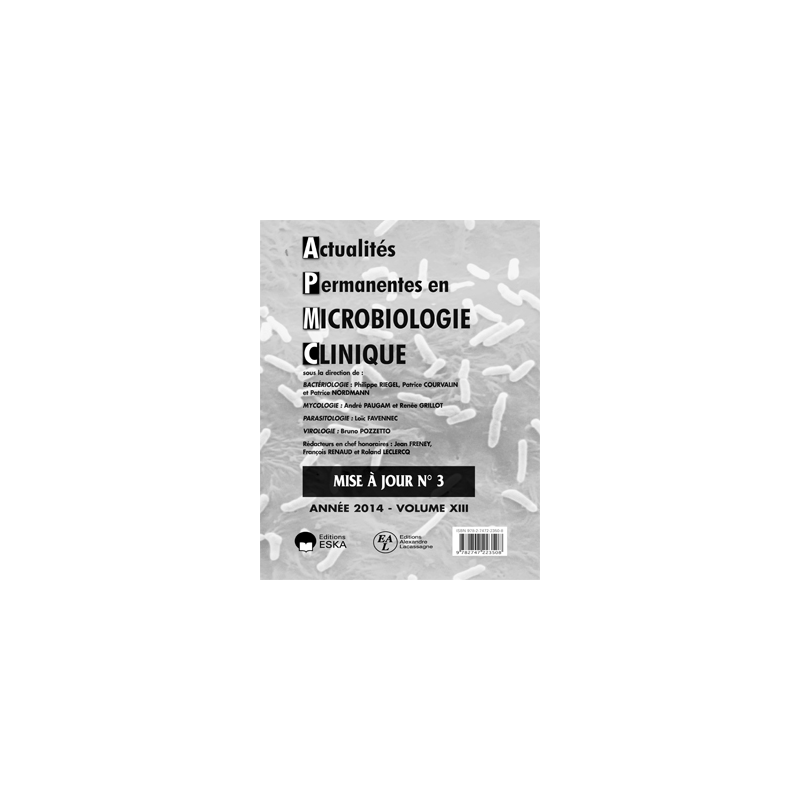



 Security policy
Security policy
(edit with the Customer Reassurance module)
 Delivery policy
Delivery policy
(edit with the Customer Reassurance module)
Résumé
Les premières études sur les bactéries anaérobies datent du siècle dernier. C’est essentiellement l’école française, avec Veillon et Zuber dans leur article « Recherches sur quelques microbes strictement anaérobies et leur rôle en pathologie », publié en 1897, qui a ouvert ce champ d’investigations : « de nos recherches actuelles, nous concluons que dans les abcès contenant un pus fétide (appendicites, abcès péri-caecaux, otites, mastoïdites, bartholinites), on trouve des microbes strictement anaérobies : la fétidité de la collection est constamment liée à la présence de ces organismes… la gangrène des tissus est sous la dépendance de microbes strictement anaérobies ».
Après ces précurseurs vinrent Rist et Guillemot (à l’Institut Pasteur de Paris), et
Castellani et Chambers (à Londres). Les recherches étaient compliquées par l’insuffisance des techniques d’obtention de l’anaérobiose. Prévot en 1933 à l’Institut Pasteur de Paris, puis Beerens à partir de 1960 à l’Institut Pasteur de Lille, Finegold à l’UCLA, et Moore au Virginia Polytechnic Institute ont poursuivi ensuite avec succès les premiers travaux.
La classification des bactéries anaérobies a subi de nombreuses révisions depuis une dizaine d’année, et l’approche phylogénétique actuelle a apporté de nombreux changements dans la taxonomie (Finegold, 2004). Nous indiquons dans l’annexe 5 les modifications apportées dans la taxonomie et les nouvelles espèces décrites de 2001 à 2005.